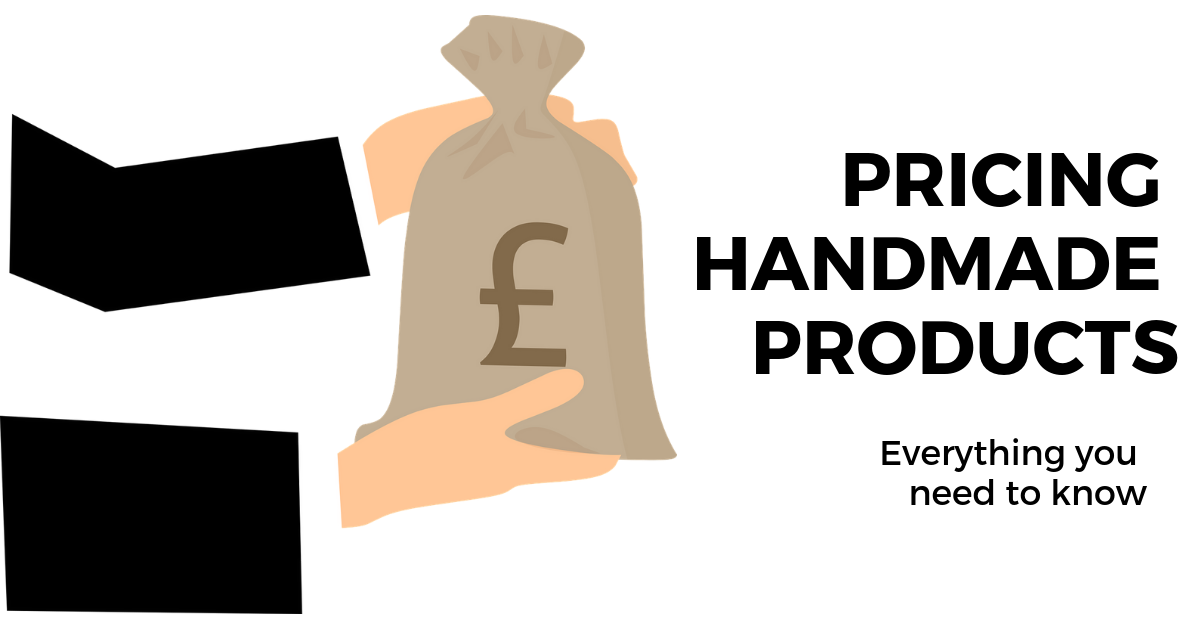A Guide to Small Business Product Pricing

Pricing your products can feel like a loaded job. Deciding on a pricing structure requires taking many factors into account, ultimately setting the tone for your business. You don't want to over or under price, so here are some tips to think about before you set anything in stone.
Establish Your Bottom Line
Calculating exactly how much it costs you to make or supply the item puts you in a much better position to formulate a price. This is often one of the most tedious tasks to do and requires having some numbers on hand. With your records next to you, you'll know the minimum possible price you can charge before taking a loss.
A helpful formula to calculate your price is:
Total Material Costs + Labor Costs + Advertising Costs + Postage + Misc. Other Expenses = Base Production Cost
Cost of Materials
Don't forget to include the cost of dispatching, taxes, etc. that you paid for your product materials in your Total Material Cost. Leaving these out would mean underestimating your costs of production.
Value of Labor
One of the biggest mistakes craftspeople and budding entrepreneurs make when figuring out product cost is not including their own labor costs. There are two ways you can do this. You can set an hourly rate that you would like to be paid and multiply that by the quantity of hours it takes you to craft your product. Alternatively, you can think of your desired profit margin and use that to calculate your value of labor.
Advertising Spend
Today, these costs are predominantly digital. They range from advertising on social media (Facebook, Instagram, Twitter, etc.) to running a Google Ads account, or purchasing space in a magazine. These can be fixed costs or variable based on the time of year, product, etc.
Miscellaneous Expenses
To ensure you're building a proper pricing structure, all of your smaller and less frequent expenses need to be accounted for just the same as those that are larger or more consistent. Don't forget to include the costs of building your brand and doing business. This can include business cards, wrapping paper, and mailing labels, dispatch costs, and more.
Tip: Keep an eye out for items you can buy in bulk. Your product labels and dispatch labels can be bought in large quantities, as can mailers or boxes and bubble wrap. Take a good look at what you dispatch every package with – those items are typically the best to snag in larger quantities for better pricing.
Determine Your Net Gain
Before deciding on your markup, there are a few topics to consider. Evaluating where you fit into the existing market will help you value your products.
Quality
High pricing can allude to better quality. Is your item made of better materials than the competitors'? If so, you might be able to charge a premium. However, if the quality doesn't match the price, you're looking at a handful of unhappy customers. This leads into our next point – ensuring you price your products within a fair and reasonable range.
Market Price & Demand
Do a deep dive on sellers who offer similar items and see what they're charging. Are there many sellers in the market? How much are they selling? You can utilise online tools like Google Ads to determine demand. Some marketplaces, such as Etsy, are even transparent with how many sales shops have made. Once you have a feel for the market, consider your options. Do you want to charge less and sell more or charge more and sell less?
Conduct your own market research if you're at a loss. Put together a survey along with some product samples. Let 20 or more customers try your product and ask them to pick from a list of pre-determined prices. This can help you gauge customers' willingness to purchase and perception of your product/brand.
Tip: Make sure to include a wide enough range to get good results. Very few people will choose the highest cost when given the option.
Price With Confidence
Once you've determined all the other pieces of the puzzle, add it all together and test your price. Remember that you can always adjust your prices if they aren't working. But don't throw out any of your research or formulas, just update them as you learn. Now, go out and make some sales!
We hope the key components of pricing strategy listed above help you move forwards with your business idea. You've determined your base production cost, gained an understanding of your time, evaluated your product, and researched your competition. With an arsenal of information, launch your products with pride. Need labels in bulk to cut back on costs? Browse our selection of business labels.


